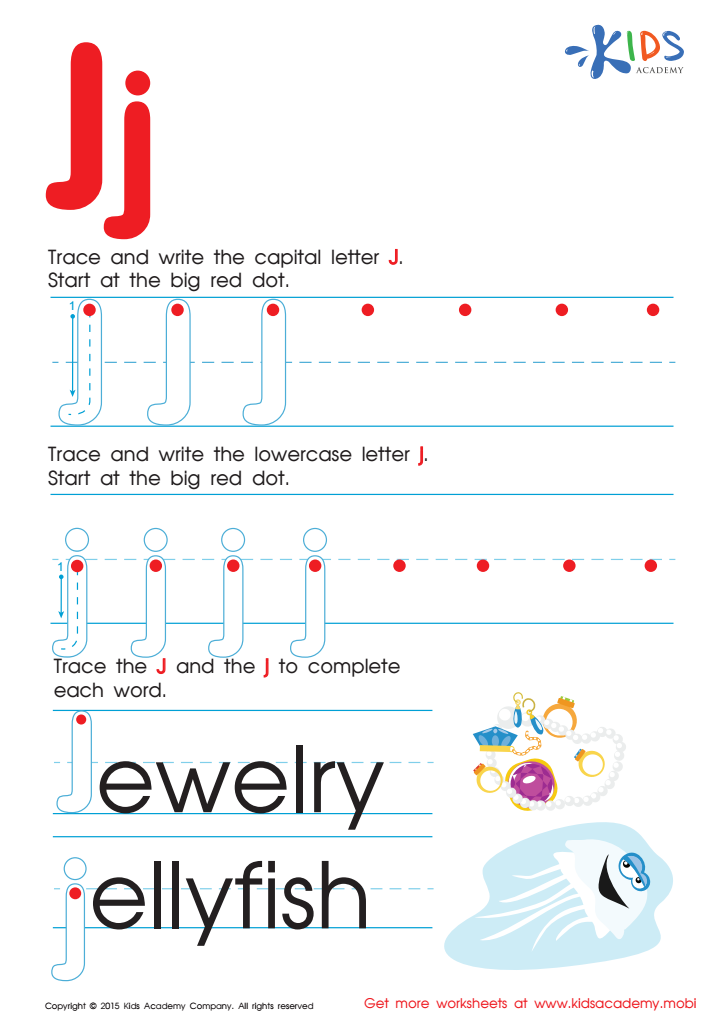Handwriting improvement Normal Tracing Letters Worksheets for Ages 3-9
4 filtered results
-
From - To
Enhance your child's handwriting skills with our Normal Tracing Letters Worksheets, designed specifically for ages 3-9. These comprehensive, grade-appropriate worksheets help young learners develop fine motor skills, letter recognition, and proper writing techniques. Perfect for both classroom and home use, our engaging and easy-to-follow activities make learning fun. Encourage your child to practice tracing letters, improve their penmanship, and build a solid foundation for future writing success. Trusted by educators, these worksheets ensure consistent progress through interactive and hands-on learning. Support your child's handwriting journey today with our expertly crafted tracing letters worksheets!


Uppercase Letters M, N, and O Worksheet


Letter J Tracing Page


Letter B Tracing Page


Uppercase Letters P, Q, and R Worksheet
Handwriting improvement, particularly through normal tracing of letters, is a crucial developmental step for children aged 3-9, encompassing cognitive, motor, and academic benefits that parents and teachers should prioritize.
Firstly, handwriting constitute a vital component of literacy. Mastering letter formation enhances children's reading skills by reinforcing letter recognition and phonemic awareness. This foundational literacy skill is integral to effective communication and academic achievement.
Secondly, handwriting practice, especially tracing, facilitates fine motor skill development. This process strengthens hand muscles, improves hand-eye coordination, and enhances dexterity. Fine motor skills are essential for everyday tasks like buttoning clothes, using utensils, and, eventually, typing.
Moreover, engaging in handwriting activities stimulates neurological development, fostering better memory retention and cognitive processing. The act of tracing letters fortifies focus and concentration skills, cultivating a child's ability to stay attentive—a skill crucial for successful learning experiences.
Lastly, improved handwriting instills a sense of accomplishment and confidence in young learners. Clear, legible handwriting is not only a practical communication tool but also a source of pride, encouraging children to participate actively in writing tasks and promoting a positive attitude towards learning.
In summary, prioritizing handwriting improvement through letter tracing supports early childhood development, leading to enhanced academic readiness and lifelong skills. The holistic benefits underscore why parents and teachers should emphasize this formative practice.
 Assign to My Students
Assign to My Students















